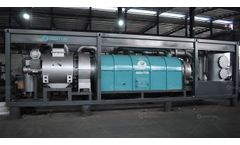carbon capture process Articles
-
Environmental Impacts of Pyrolysis Oil Production and Utilization
In the quest for sustainable energy sources and waste reduction, pyrolysis oil has emerged as a promising player. This remarkable substance is obtained through the process of pyrolysis, which converts organic materials into a valuable liquid fuel. While it offers a plethora of benefits, it's crucial to scrutinize the environmental impacts of both its production and utilization. The Eco-Friendly ...
-
Benefits of Biomass Pyrolysis Plant to Process Coconut Shells
Coconut shells, often seen as waste, hold untapped potential in various industries. These sturdy byproducts of the coconut industry are traditionally discarded or underutilized, leading to environmental concerns and missed opportunities for resource optimization. The Role of Biomass Pyrolysis Plant The biomass pyrolysis plant offers a sustainable and eco-friendly solution to harness the hidden ...
-
Industrial decarbonisation: How to reduce your carbon footprint?
Decarbonisation is a crucial stake for all companies, given that the industrial sector is responsible for 19% of greenhouse gas emissions in the UK. In 2021 it was directly responsible for emitting 9.4?Gt of CO2, accounting for a quarter of global emissions. While progress has been made in this sector since the 1990s, the manufacturing industry (part of the industrial sector) alone produced 78.4 ...
-
Can we bury the carbon dioxide problem?
Seriously — carbon capture and storage could be a game-changer. Mention “carbon capture and storage” — the process of trapping carbon dioxide produced in fossil-fuel burning or other industrial processes and burying it underground — in polite company, and you’re likely to be pounced on. It’s absurdly expensive. It can never be rolled out en masse. ...
By Ensia
Need help finding the right suppliers? Try XPRT Sourcing. Let the XPRTs do the work for you



